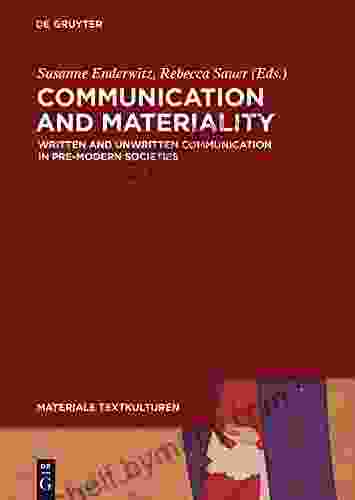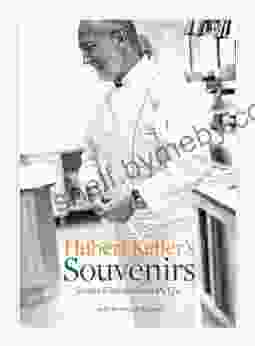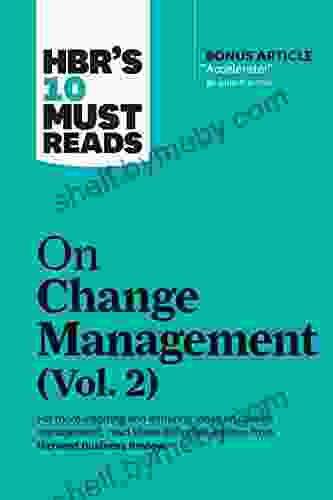Written and Unwritten Communication in Pre-Modern Societies: Exploring the Intangible Roots of Human Expression

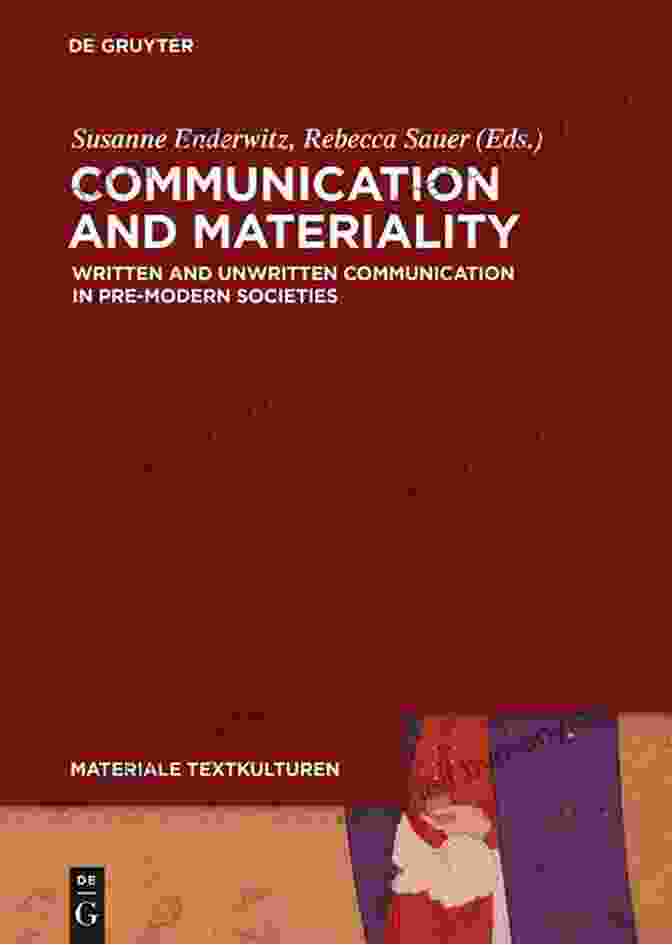
Communication, the cornerstone of human society, takes on diverse forms, ranging from the spoken word to intricate writing systems. While written communication has received considerable scholarly attention, its unwritten counterpart, no less significant, often remains shrouded in obscurity. This article delves into the intriguing realm of written and unwritten communication in pre-modern societies, shedding light on their profound influence on the development of human civilization.
4.3 out of 5
| Language | : | English |
| File size | : | 3158 KB |
| Text-to-Speech | : | Enabled |
| Screen Reader | : | Supported |
| Enhanced typesetting | : | Enabled |
| Print length | : | 139 pages |
The Dawn of Written Communication
The invention of writing, a pivotal moment in human history, revolutionized the way societies preserved and transmitted information. The earliest known written records date back to ancient Mesopotamia, where the Sumerians developed cuneiform, a wedge-shaped writing system used to record administrative, economic, and religious texts on clay tablets.
In parallel, the ancient Egyptians devised hieroglyphics, a more pictorial script, to document significant events and communicate with the divine. As writing spread across the globe, it assumed various forms, from the Chinese characters to the Mayan glyphs, each reflecting the unique cultural and linguistic landscape of its origin.
The Significance of Unwritten Communication
While written communication played a crucial role in preserving knowledge and transmitting ideas across time and space, its reach was limited to a select few. In contrast, unwritten communication, encompassing a vast array of expressive forms, permeated all levels of society.
Oral traditions, including storytelling, poetry, and song, were the primary means of preserving and transmitting cultural heritage, history, and moral teachings. Through these oral narratives, communities forged a shared sense of identity and passed down invaluable knowledge from one generation to the next.
Nonverbal communication, including gestures, body language, and facial expressions, played an equally vital role in conveying messages. In pre-literate societies, where written language was inaccessible to most, nonverbal cues assumed a paramount significance, enabling nuanced communication and facilitating social interactions.
Visual arts, encompassing cave paintings, sculptures, and artifacts, provided another avenue for unwritten communication. These artistic expressions served as powerful visual narratives, conveying complex ideas, documenting historical events, and facilitating spiritual practices.
Interdependence and Influences
Far from operating in isolation, written and unwritten communication in pre-modern societies interacted and influenced each other in dynamic ways. Written texts often incorporated elements of oral traditions, preserving and legitimizing spoken narratives. Conversely, oral performances sometimes drew inspiration from written sources, intertwining the two modes of communication.
Nonverbal communication also played a role in shaping written language. In some cultures, gestures and facial expressions were incorporated into written scripts, providing additional layers of meaning and context. This interplay between different modes of communication enriched the expressive repertoire of pre-modern societies.
The Legacy of Pre-Modern Communication
The communication practices of pre-modern societies left an enduring legacy on human civilization. Written communication, with its ability to transcend time and distance, laid the foundation for the development of modern literature, science, and education.
Unwritten communication, though less tangible, continues to influence contemporary forms of expression. Oral traditions, storytelling, and nonverbal cues remain integral to human interaction, shaping our understanding of ourselves and our world. The visual arts, inspired by ancient cave paintings and artifacts, continue to inspire and engage audiences worldwide.
By examining written and unwritten communication in pre-modern societies, we gain a deeper appreciation of the diverse ways in which humans have expressed themselves throughout history. This understanding enriches our own communication practices and fosters a broader perspective on the multifaceted nature of human expression.
Written and unwritten communication in pre-modern societies were intertwined threads in the tapestry of human civilization. While written communication provided a means of preserving and transmitting knowledge across time and space, its unwritten counterpart, encompassing oral traditions, nonverbal cues, and visual arts, played an equally vital role in shaping cultural identity, fostering social interactions, and expressing complex ideas.
By exploring the intricate relationship between these two modes of communication, we gain a profound understanding of the origins and evolution of human expression. This knowledge not only enriches our appreciation for the rich cultural heritage of the past but also provides valuable insights into the complexities of communication in our own time.
4.3 out of 5
| Language | : | English |
| File size | : | 3158 KB |
| Text-to-Speech | : | Enabled |
| Screen Reader | : | Supported |
| Enhanced typesetting | : | Enabled |
| Print length | : | 139 pages |
Do you want to contribute by writing guest posts on this blog?
Please contact us and send us a resume of previous articles that you have written.
 Book
Book Novel
Novel Page
Page Chapter
Chapter Text
Text Story
Story Genre
Genre Reader
Reader Library
Library Paperback
Paperback E-book
E-book Magazine
Magazine Newspaper
Newspaper Paragraph
Paragraph Sentence
Sentence Bookmark
Bookmark Shelf
Shelf Glossary
Glossary Bibliography
Bibliography Foreword
Foreword Preface
Preface Synopsis
Synopsis Annotation
Annotation Footnote
Footnote Manuscript
Manuscript Scroll
Scroll Codex
Codex Tome
Tome Bestseller
Bestseller Classics
Classics Library card
Library card Narrative
Narrative Biography
Biography Autobiography
Autobiography Memoir
Memoir Reference
Reference Encyclopedia
Encyclopedia Madeleine Korbel Albright
Madeleine Korbel Albright Hossein Amerkashi
Hossein Amerkashi Larry Kay
Larry Kay Henry Hemming
Henry Hemming Herbert Ausubel
Herbert Ausubel Healthryt Brand
Healthryt Brand Kerrie Logan Hollihan
Kerrie Logan Hollihan John H Falk
John H Falk Henry J Heimlich
Henry J Heimlich Heather Graham
Heather Graham Sarah Fay
Sarah Fay Harvey Motulsky
Harvey Motulsky S J Scott
S J Scott Helen Bauer
Helen Bauer Justin Goldman
Justin Goldman Hillary Hawkins
Hillary Hawkins James Caskey
James Caskey Mary Bergin
Mary Bergin Ian Probert
Ian Probert Kellee Wynne Conrad
Kellee Wynne Conrad
Light bulbAdvertise smarter! Our strategic ad space ensures maximum exposure. Reserve your spot today!
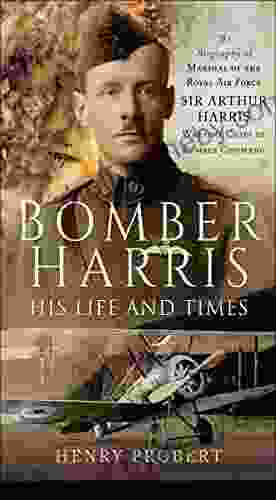
 George HayesUnveiling the Life and Legacy of Sir Arthur Harris: A Comprehensive Biography...
George HayesUnveiling the Life and Legacy of Sir Arthur Harris: A Comprehensive Biography...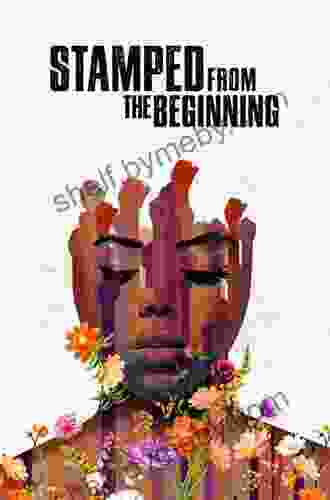
 Dwight BellStamped from the Beginning: A Rich History of African Americans and Racism in...
Dwight BellStamped from the Beginning: A Rich History of African Americans and Racism in...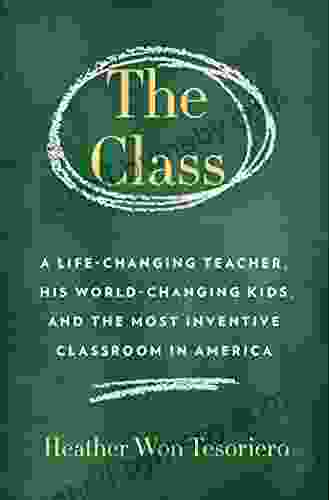
 Fabian MitchellMeet the Life-Changing Teacher Who Inspired His Students to Create the Most...
Fabian MitchellMeet the Life-Changing Teacher Who Inspired His Students to Create the Most... Cruz SimmonsFollow ·12.1k
Cruz SimmonsFollow ·12.1k Jace MitchellFollow ·17.6k
Jace MitchellFollow ·17.6k Ivan CoxFollow ·13.3k
Ivan CoxFollow ·13.3k Fernando BellFollow ·14.5k
Fernando BellFollow ·14.5k W.H. AudenFollow ·19.9k
W.H. AudenFollow ·19.9k Isaiah PowellFollow ·18.2k
Isaiah PowellFollow ·18.2k Simon MitchellFollow ·19.1k
Simon MitchellFollow ·19.1k Miguel de CervantesFollow ·14.1k
Miguel de CervantesFollow ·14.1k
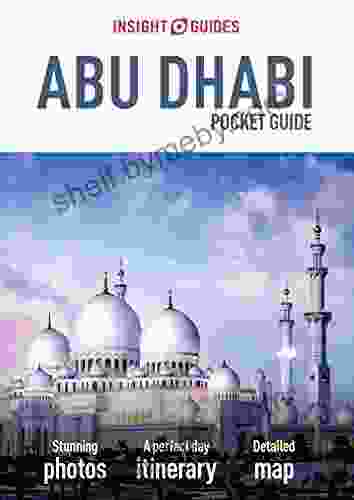
 Bo Cox
Bo CoxUncover the Enchanting Pearl of the Arabian Gulf: Insight...
Escape to the opulent...
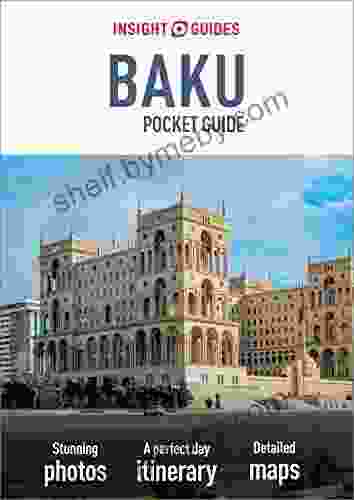
 Michael Crichton
Michael CrichtonInsight Guides Pocket Baku Travel Guide Ebook: Your...
An Enchanting Journey...

 Eugene Scott
Eugene ScottLearn to Paint Scenic Scenes: Unveil the Secrets of...
Step into the...
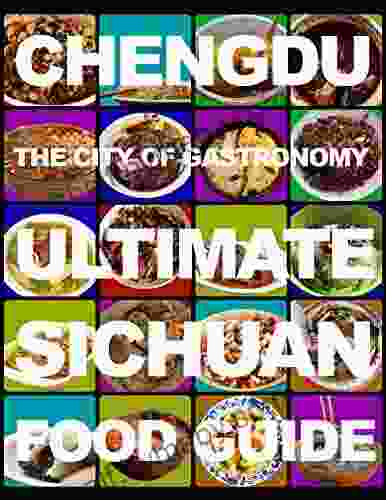
 Benji Powell
Benji PowellEmbark on a Culinary Adventure with "The Ultimate Sichuan...
Sichuan cuisine,...

 Finn Cox
Finn CoxDiscover the Enchanting World of Art Nouveau: A...
Immerse yourself in the captivating beauty...
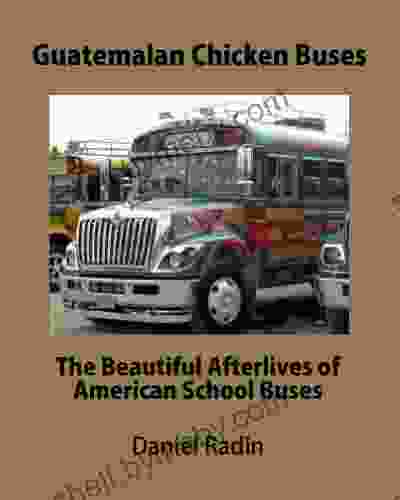
 Corey Green
Corey GreenUncover the Vibrant World of Guatemalan Chicken Buses: An...
Step into a world of vibrant colors,...
4.3 out of 5
| Language | : | English |
| File size | : | 3158 KB |
| Text-to-Speech | : | Enabled |
| Screen Reader | : | Supported |
| Enhanced typesetting | : | Enabled |
| Print length | : | 139 pages |


